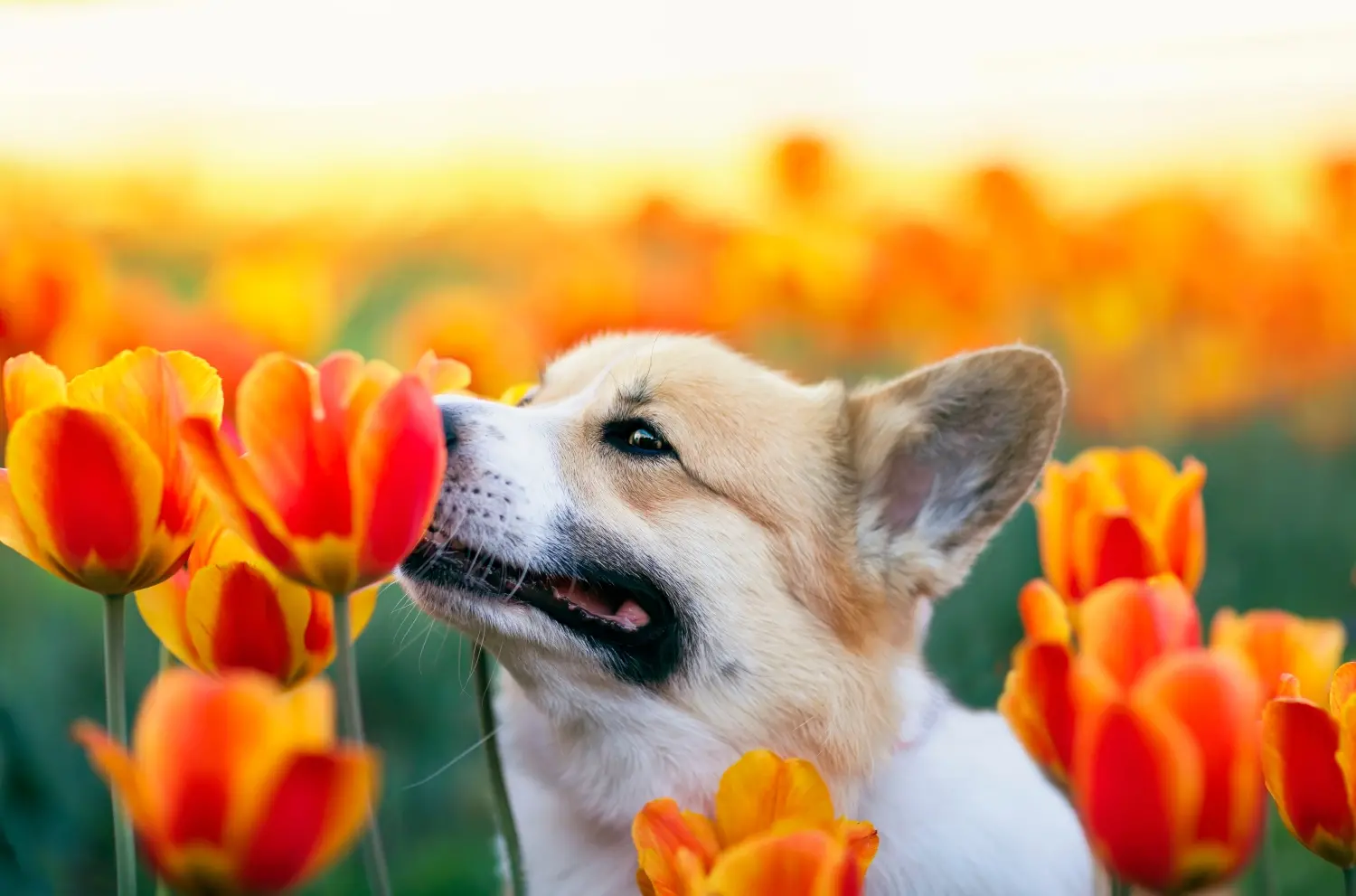
The backyard can be fun and full of surprises for our canine friends to enjoy, but don't let one of those surprises be a trip to the veterinarian. Check out our list of the most dangerous garden plants for dogs to help make your yard more pet-friendly.
Your backyard is meant to be a safe and contained space for your dog to play and explore, but if your dog has a habit of taste-testing the foliage, then you might want to make sure that your garden plants aren't on the list of the most dangerous plants for dogs.
Keep your yard and garden safe for dogs by avoiding these plants, flowers, shrubs, and trees that could make them very sick. Or, at the very least, plant them with caution and always supervise your pet.
What plants are toxic to dogs? Some plants can be extremely toxic, while others might just cause some mild irritation. To be safe it's best to know which plants you should avoid in your garden this year.
***WARNING: This list is meant for general information purposes only. It is by no means to replace qualified veterinary advice. If your pet could have possibly ingested any of these plants, you should call your vet immediately.
While this list covers many of the common toxic plants for dogs, it does not list wild or household plants. For even more information on dangerous plants for pets, our friends at Rover built a dangerous plants database for dogs and cats.
Full List of Dangerous Garden Plants for Dogs
Herbs, Vegetables, and Other Edible Plants That Are Dangerous for Dogs
1. Chamomile
.webp?width=600&height=400&name=Chamomile-(1).webp)
Scientific name: Anthemis nobilis
A lovely herb often used in teas and in aromatherapy for soothing and calming nerves, the chamomile plant is toxic to dogs. While chamomile is safe in products for dogs, you want to avoid your dog's contact with the actual plant.
Possible symptoms: Contact dermatitis, vomiting, diarrhea, anorexia, allergic reactions, bleeding tendencies (long-term use). Source.
2. Chives
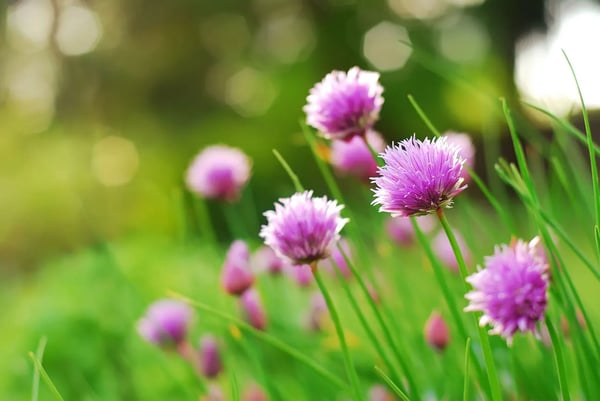
Scientific name: Allium schoenoprasum
Chives, along with others in the Allium family, such as onions, can be quite harmful to dogs when ingested. While they can tolerate low doses (as you'll find some flavouring in dog treats), it is best to avoid these plentiful herbs whenever possible.
Possible symptoms: Drooling, nausea, oral irritation, vomiting, diarrhea, lethargy, abdominal pain, elevated heart rate and respiratory rate, weakness, exercise intolerance, collapse, pale gums Source.
3. Garlic
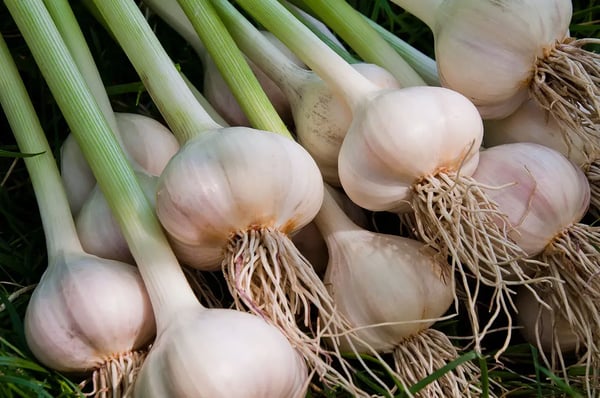
Scientific name: Allium sativum
A member of the Allium family, just like chives, garlic is delicious but can be mild to moderately dangerous for dogs if fed in large quantities. Small portions of garlic have health benefits, but if your dog goes to town on a garlic plant in your garden, it can be harmful.
Keep a close eye and only allow him to eat garlic that is appropriately dosed for his weight.
Possible symptoms: Drooling, nausea, oral irritation, vomiting, diarrhea, lethargy, abdominal pain, elevated heart rate and respiratory rate, weakness, exercise intolerance, collapse, pale gums Source.
4. Hops

Scientific name: Humulus Lupulus
With home brewing on the rise, you may need to watch out for hops growing in backyards. The plants are enormous climbing vines, so they should be easy to spot. The effects can be quite severe, with dried hops being the most toxic form. Keep any home-brewing materials and leftovers safely contained - hops can be hazardous whether fresh, dried, or cooked (spent hops).
Possible symptoms: panting, high body temperature, seizures, death. Source.
5. Leeks
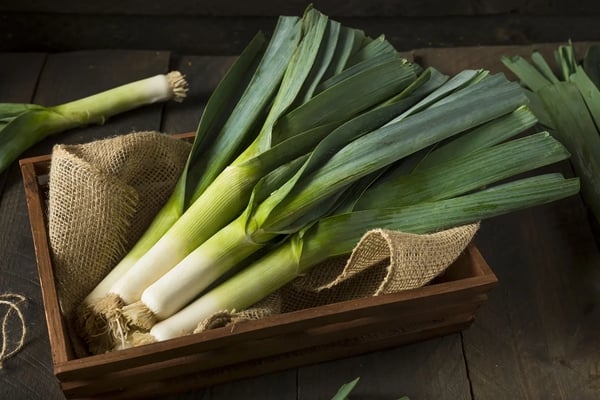
Scientific name: Allium ampeloprasum
Another slightly less popular member of the Allium family, leeks make a delicious addition to soups and many other dishes. However, just don't feed them to your dog. Like other members of the onion family, they can cause some very uncomfortable symptoms for dogs.
Possible symptoms: Drooling, nausea, oral irritation, vomiting, diarrhea, lethargy, abdominal pain, elevated heart rate and respiratory rate, weakness, exercise intolerance, collapse, pale gums Source.
6. Marijuana

Scientific name: Cannabis genus
With marijuana legalization a hot topic and even though it may have a medical use for humans, you should take precautions so that your dog does not come across the live marijuana plant or dried cannabis in any form. Symptoms can be mild to moderate and even include death.
Possible symptoms: Prolonged depression, vomiting, incoordination, sleepiness or excitation, hypersalivation, dilated pupils, low blood pressure, low body temperature, seizure, coma, death (rare) Source.
7. Onions and Shallots
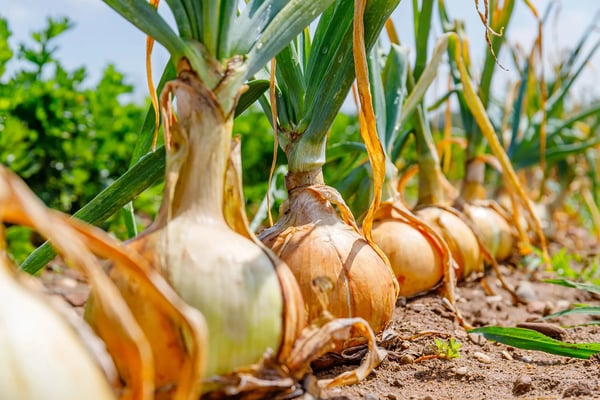
Scientific name: Allium cepa (var. aggregatum - shallots)
A popular seasoning vegetable, onions (and the less common shallots) are a staple for many gardens. However, extra caution if you have dogs (or cats, who are even more susceptible to toxic effects).
Possible symptoms: Drooling, nausea, oral irritation, vomiting, diarrhea, lethargy, abdominal pain, elevated heart rate and respiratory rate, weakness, exercise intolerance, collapse, pale gums Source.
8. Rhubarb
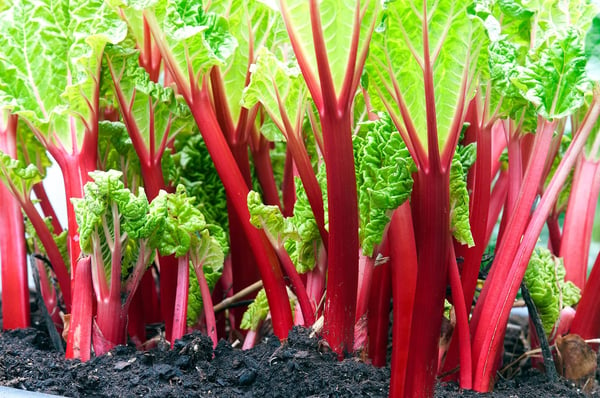
Scientific name: Rheum rhabarbarum
An early spring perennial, rhubarb is delicious when added to pies, crips, and other baked dog treats. However, the leaves (and less so, stalks) contain oxalate crystals, which can wreak havoc with your dog's urinary tract. They're also flowers poisonous to dogs to people, so always be careful when handling them.
Possible symptoms: Drooling, loss of appetite, vomiting, diarrhea, lethargy, weakness, tremors, blood in urine, changes to thirst, and urination Source.
9. Tomato Plants
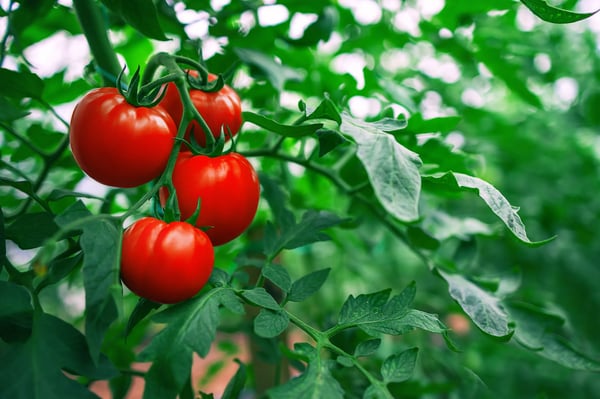
Scientific name: Solanum lycopersicum
Tomatoes are a vegetable garden favourite, but growers beware. A member of the nightshade family, tomato vines and leaves can cause some worrying symptoms in pets (and people, too). The tomato fruit itself is safe, but make sure that all leaves, stems, or any other part of the plant have been removed before sharing with your pooch.
Possible symptoms: Hypersalivation, inappetence, severe gastrointestinal upset, diarrhea, drowsiness, CNS depression, confusion, behavioural change, weakness, dilated pupils, slow heart rate Source.
Flowers and Vines That Are Dangerous for Dogs
10. Amaryllis
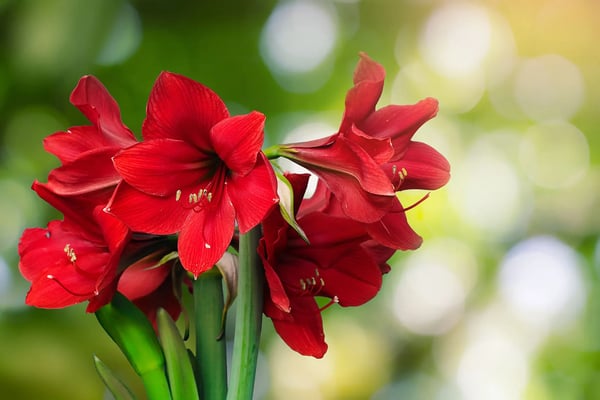
Scientific name: Amaryllis belladonna (or other species), or Hippeastrum
Sometimes also called the Narcissus, these Lily-family bulb plants can be dangerous to both dogs and cats but are not as dangerous to dogs as true lilies. Toxins can be found in the leaves and stem and are most concentrated in the bulbs.
Possible symptoms: Drooling, vomiting, hypotension, respiratory depression, abdominal discomfort Source.
11. Asparagus Fern
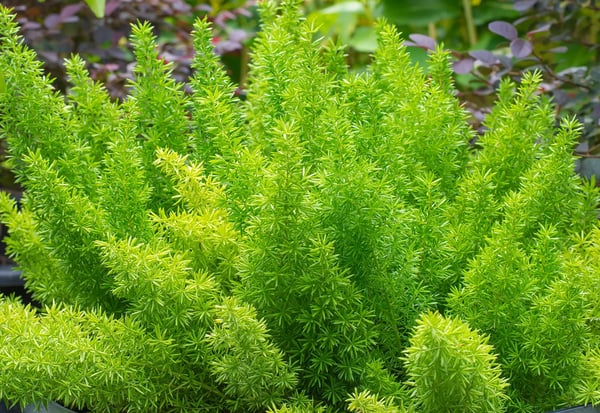
Scientific name: Asparagus densiflorus cv. Sprengeri
Usually found indoors as an ornamental plant, but sometimes outdoors in the summer, the Asparagus Fern can make your pet feel uncomfortable if exposed through touch or if ingested. Also called the Emerald Fern or the Lace Fern. Asparagus fern is not a true fern. Many actual ferns are pet safe, like boston ferns.
Possible symptoms: Allergic dermatitis with repeated exposure, gastric upset from berry ingestion (vomiting, abdominal pain, or diarrhea) Source.
12. Autumn Crocus
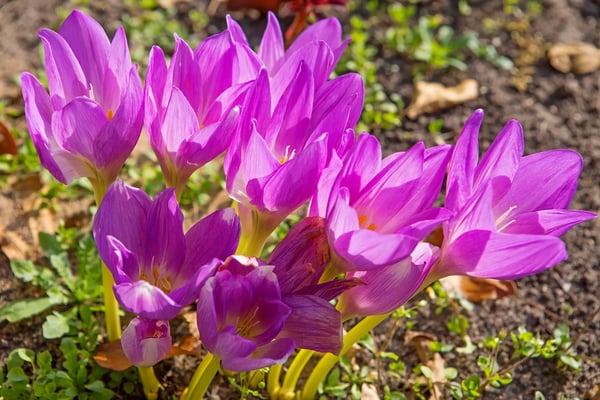
Scientific name: Colchicum autumnale
Not to be confused with the more common spring Crocus, the autumn-blooming crocus can cause very severe gastrointestinal upset and even respiratory or kidney failure and death. The spring Crocus can still cause gastrointestinal upset, but the symptoms are usually mild.
Possible symptoms: Drooling, vomiting, diarrhea, loss of appetite, bloody diarrhea, black tarry stool, organ damage, respiratory failure, seizures, death Source.
13. Begonia

Scientific name: Begonia genus
These bright perennials (annuals in cool regions) are numerous in variety and very popular as garden plants and even indoor plants. However, they can cause some very uncomfortable symptoms in pets if they are ingested, particularly the highly toxic tubers.
Possible symptoms: Oral irritation, intense burning, irritation of mouth, tongue, and lips, excessive drooling, vomiting, difficulty swallowing Source.
14. Laceflower
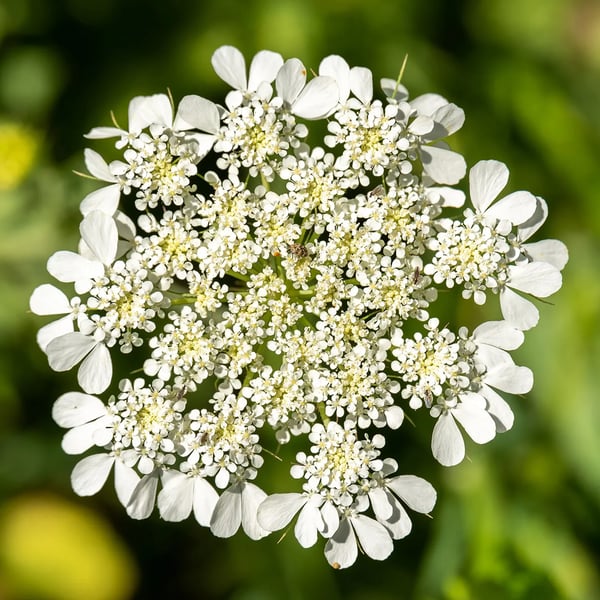
Scientific name: Ammi majus
This flower is a garden flower, prized for its versatility in cut flower arrangements. A member of the carrot family can cause pain and other worrying symptoms if ingested or touched. Also called False Queen Anne's Lace, Bishop's Weed, Queen of Africa, or Greater Ammi.
Possible symptoms: Oral irritation, intense burning, irritation of mouth, tongue, and lips, excessive drooling, vomiting, difficulty swallowing Source.
15. Bleeding Heart

Scientific name: Lamprocapnos spectabilis
This popular shade-loving garden flower is a beauty in the spring, but if ingested, it's been linked to digestive upset and tremors.
Possible symptoms: Vomiting, diarrhea, staggering, tremors Source.
16. Buttercup
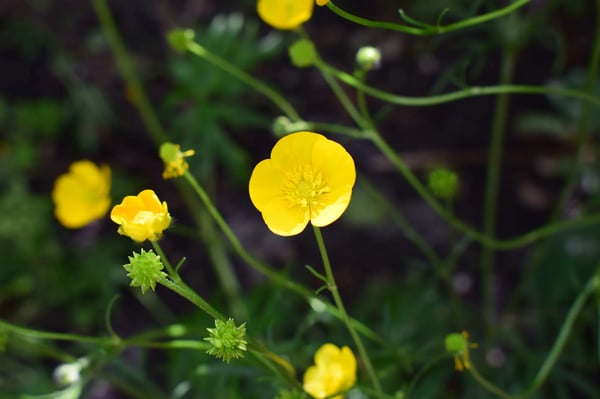
Scientific name: Ranunculus genus
While most of the varieties are seen as weeds, buttercups have pretty flowers and can be found quite commonly in gardens and lawns and growing wild in certain regions. The buttercup is unpleasant should your pet happen to consume it. Fortunately, since it does cause painful mouth blisters, usually pets do not consume enough to do lasting harm.
Possible symptoms: Drooling, vomiting, diarrhea, weakness, oral blisters, tremors, seizures, paralysis (rare) Source
17. Castor Bean

Scientific name: Ricinus communis
The castor bean plant is a big, beautiful ornamental if you live in a warm enough climate to sustain one year-round. However, the deadly toxin ricin can be found within the beans (seeds).
Possible symptoms: Inappetance, drooling, abdominal pain, vomiting, severe bloody diarrhea, abdominal straining, weakness, trembling, hypotension, sudden collapse, death Source
18. Chrysanthemum

Scientific name: Chrysanthemum genus
These lovely annuals, commonly called 'mums', are popular in gardens and as house plants or cut flowers. When ingested by pets, they usually have a mild effect, but it is worth noting considering their popularity. The toxin they contain, pyrethrins, is used in dog tick and flea medications.
Possible symptoms: Inappetance, vomiting, diarrhea Source
19. Clematis

Scientific name: Clematis genus
This gorgeous vine produces large, star-shaped blooms. The plant has a bitter taste, so your pet is unlikely to ingest a lot of it, but it's still best to keep your pet away.
Possible symptoms: Salivation, vomiting, diarrhea Source
20. Cyclamen

Scientific name: Cyclamen genus
Cyclamen is a popular houseplant with unique upswept flowers and beautiful variation in their leaves, but they're also dangerous for dogs and cats. The tubers are the most poisonous and can result in seizures, heart problems, and even death when consumed in large quantities.
Possible symptoms: Drooling, vomiting, diarrhea, abnormal heart rate, seizures, death Source
21. Daffodil

Scientific name: Narcissus genus
Popular in the early spring around Easter, the daffodil may cause a severe reaction in your pet, so it's best to see a veterinarian if your pet ingests it, particularly the bulb.
Possible symptoms: Vomiting, salvation, diarrhea; large ingestions: convulsions, low blood pressure, tremors and cardiac arrhythmias Source
22. Foxglove
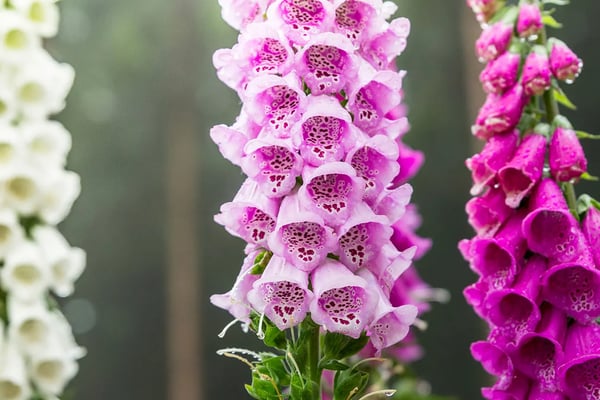
Scientific name: Digitalis purpurea
The foxglove may be beautiful, but all parts of the plant are very toxic for dogs, cats, and even humans to consume. Make sure your pets steer clear of these beautiful bell-shaped biennials.
Possible symptoms: Drooling, nausea, vomiting, abnormal heart rate, cardiac arrhythmias, weakness, collapse, dilated pupils, tremors, seizures, death Source
23. Geranium
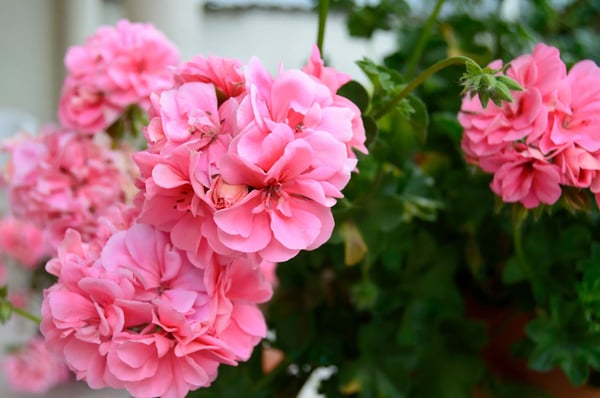
Scientific name: Pelargonium genus
The ever-popular geranium comes in many different colours and varieties. There are two species of geraniums, each of which has countless cultivars. The Geranium genus is safe (also called Cranesbill), but the Pelargonium species are toxic for pets.
Possible symptoms: Vomiting, loss of appetite, lethargy, skin rash, decreased heart rate, decrease in blood pressure, depression Source
24. Gladiola
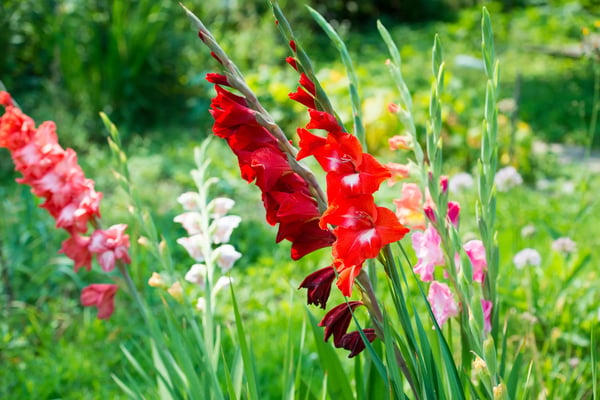
Scientific name: Gladiolus genus
Gladiolas make quite a presence in gardens with their impressive stalks of large blooms. The perennials also spread quickly through seed. Like most bulb flowers, the highest concentration of toxin is in the bulb or corm.
Possible symptoms: Salivation, vomiting, drooling, lethargy, diarrhea Source
25. Hosta
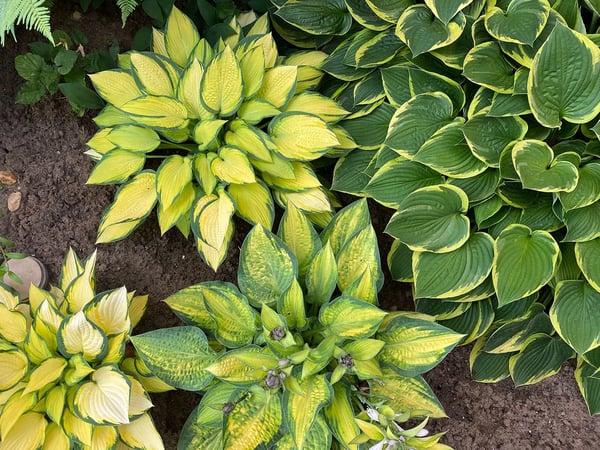
Scientific name: Hosta genus
A common shade-loving plant, the hosta comes in many different cultivars that can vary widely.
Possible symptoms: Vomiting, diarrhea, depression Source
26. Iris

Scientific name: Iris genus
The common name for all flowers in the iris genus, irises have beautiful, brightly coloured blooms that can cause issues for pets if ingested.
Possible symptoms: Vomiting, diarrhea, drooling Source
27. Ivy

Scientific name: Hedera helix
English Ivy, also called Needlepoint Ivy, Sweetheart Ivy, Glacier Ivy, or Branching Ivy, will cause your pet to experience uncomfortable symptoms if consumed. The leaves are more poisonous than the berries.
Possible symptoms: Vomiting, abdominal pain, hypersalivation, diarrhea Source
28. Larkspur

Scientific name: Delphinium genus
Larkspur, sometimes called Delphinium, can cause some very worrying symptoms in pets. The plant loses toxicity with age and certain seasons but should be avoided at any rate.
Possible symptoms: neuromuscular paralysis, constipation, colic, salivation, muscle tremors, stiffness, weakness, recumbency, convulsions, cardiac failure, and death from respiratory paralysis Source
29. Lily

Scientific name(s): Zantedeschia aethiopica, Spathiphyllum, Cordyline australis
There are so many varieties of lilies, and while most of them are incredibly toxic to cats, only a few are poisonous to dogs. Calla Lilies, Peace Lilies, and Palm Lilies are all plants toxic to dogs. These plants are rarely seen outdoors out of sub-tropical or tropical climates but are popular indoor houseplants.
Possible symptoms: Oral irritation, intense burning and irritation of mouth, tongue and lips, excessive drooling, vomiting, difficulty swallowing Source
30. Lily-of-the-Valley

Scientific name(s): Convallaria majalis
A popular shade flower that can spread quickly, Lily-of-the-valley is a beautiful and fragrant flower but can produce very serious symptoms in pets and people. Watch out, especially for the orange-coloured berries, which are the most toxic.
Possible symptoms: Vomiting, diarrhea, slowed heart rate, severe heart arrhythmias, seizures, death Source
31. Monkshood

Scientific name(s): Aconitum genus
Also called Aconite or Wolfsbane, Monkshood has gorgeous, purple sculptural blooms, but it is bushes poisonous to dogs to humans and should be planted with caution.
Possible symptoms: Weakness, heart arrhythmias, paralysis, tremors, seizures Source
32. Morning Glory

Scientific name(s): Ipomea genus
A lovely climbing vine, the morning glory is quick-growing with purple trumpet-shaped blooms. If large amounts are ingested, particularly the seeds, the plant can be very toxic.
Possible symptoms: Incoordination, diarrhea, anemia, liver failure Source
33. Periwinkle

Scientific name(s): Vinca rosea
With its small namesake blue or pink flowers, periwinkle makes an attractive ground-cover plant, but it can be quite toxic, even resulting in death (rare).
Possible symptoms: Vomiting, diarrhea, low blood pressure, depression, tremors, seizures, coma, death. Source
34. Primrose

Scientific name(s): Primula vulgaris
Primrose comes in many different colours and contains an unknown toxin that produces mild effects in pets.
Possible symptoms: Mild vomiting. Source
35. Star of Bethlehem
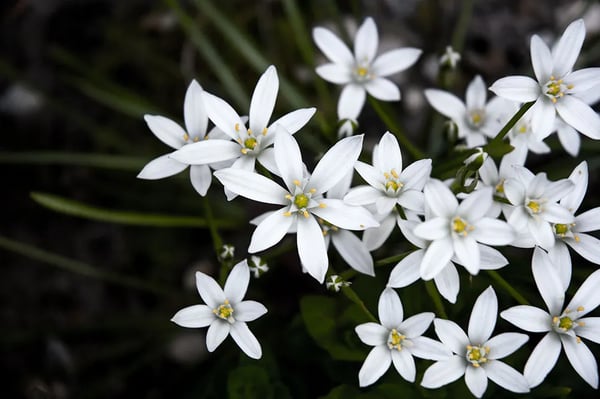
Scientific name(s): Ornithogalum genus
A beautiful star-shaped flower, the Star-of-Bethlehem contains a toxin that behaves similarly to a common heart and veterinary medicine, digitalis or digoxin.
Possible symptoms: Drooling, nausea, vomiting, changes in heart rate, cardiac arrhythmias, weakness, collapse, dilated pupils, tremors, seizures, death Source
36. Sweet Pea

Scientific name(s): Lathyrus latifolius
A common vine with multi-coloured flowers, the sweet pea can be hazardous to dogs and other animals when ingested, particularly in large amounts.
Possible symptoms: Weakness, lethargy, pacing, head pressing, tremors, seizures, possible death Source
37. Tulip/Narcissus

Scientific name(s): Tulipa genus
Tulips are everywhere in the springtime and are a garden staple. But you should be cautious with them around your dog, particularly the bulbs, which are the most toxic.
Possible symptoms: Vomiting, depression, diarrhea, hypersalivation Source
38. Wisteria

Scientific name(s): Wisteria genus
A cascading climbing vine in the pea family, Wisteria contains a few toxic compounds that can affect pets.
Possible symptoms: Vomiting (sometimes with blood), diarrhea, depression Source
39. Yarrow
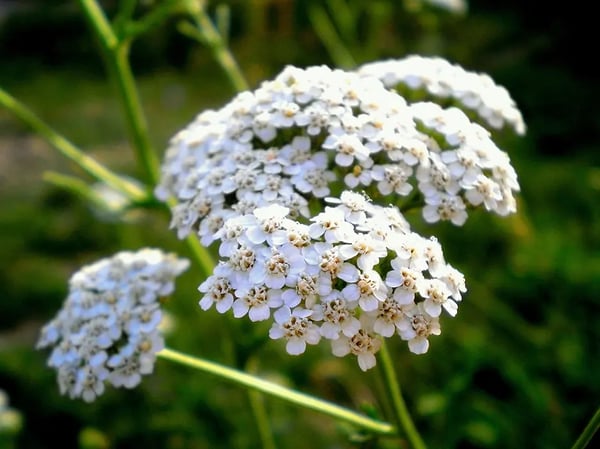
Scientific name(s): Achillea millefolium
A common and easy-spreading garden perennial, yarrow contains several toxic elements that can make your pet quite uncomfortable if ingested.
Possible symptoms: vomiting, diarrhea, depression, anorexia, hypersalivation Source
Trees and Shrubs That Are Dangerous For Dogs
40. Apple Tree
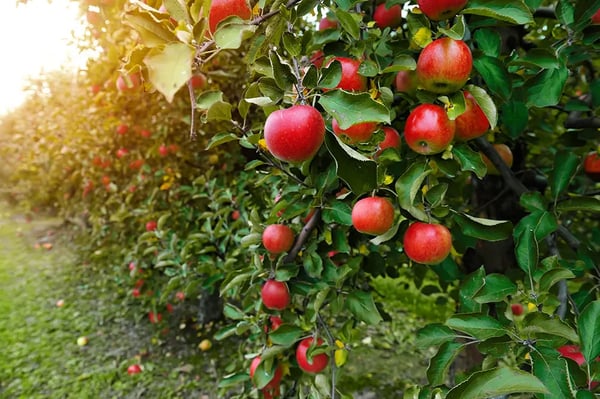
Scientific name(s): Malus genus
Apples are a tasty treat for dogs, but some parts of the apple tree (including crabapple trees) pose some risks to dogs as a toxin. The leaves, stems, and seeds all contain cyanide and are particularly toxic when they are wilting.
Possible symptoms: Red mucous membranes, dilated pupils, difficulty breathing, panting, shock. Source
41. Apricot Tree
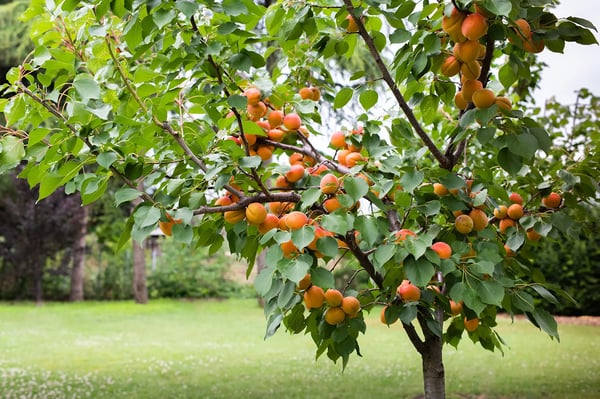
Scientific name(s): Various Prunus species, including Prunus armeniaca, Prunus brigantina, Prunus mandshurica, Prunus mume, and Prunus sibirica
Apricots are safe for dogs to eat as long as you remove the pit. But similarly to apple trees, the leaves and stems of the apricot tree contain cyanide in higher concentrations if they are wilting.
Possible symptoms: Red mucous membranes, dilated pupils, difficulty breathing, panting, shock. Source
42. Bead Tree
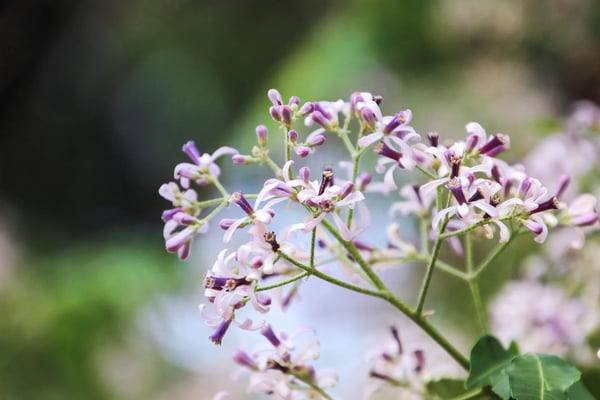
Scientific name(s): Melia azedarac
Also called Chinaberry Tree, Indian Lilac or White Cedar, this unique tree with star-shaped lavender blooms and yellow globe fruit can be very harmful to pets if ingested, especially in large quantities. The highest concentration of the toxin is in the fruit.
Possible symptoms: drooling, vomiting, diarrhea, and depression; with larger ingestions, seizures and death. Source
43. Burning Bush
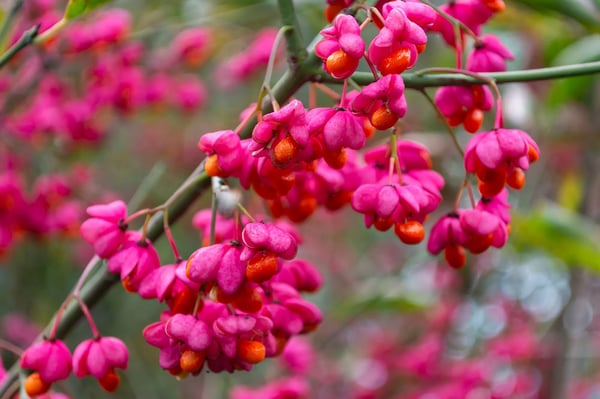
Scientific name(s): Euonymus alatus, Euronymus atropurpurea
A garden ornamental with bright red leaves in fall and pink and orange berries, the Burning Bush makes a stunning addition to the yard. However, the plant is an invasive species in certain areas, such as Massachusetts and New Hampshire and can also be toxic to dogs, cats, and even humans, particularly the berries or seeds.
Possible symptoms: Vomiting, diarrhea, abdominal pain, weakness; with larger ingestions, heart rhythm abnormalities. Source
44. Cherry Tree
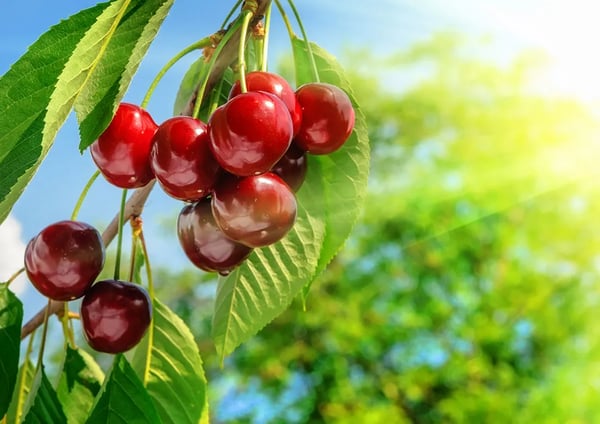
Scientific name(s): Various Prunus species, such as Prunus avium and Prunus cerasus
Like apple and apricot trees, leaves, stems, and pits of all kinds of cherry trees contain cyanide. Pay particular concern if the leaves are in the wilting stage.
Possible symptoms: Red mucous membranes, dilated pupils, difficulty breathing, panting, shock. Source
45. Hydrangea

Scientific name: Hydrangea genus
Hydrangea is a decorative garden shrub with tight globe-like clusters of blue, purple, or pink flowers. It is also a common cut flower or houseplant. The leaves and flowers are the most toxic parts.
Possible symptoms: Vomiting, diarrhea, lethargy Source
46. Oleander
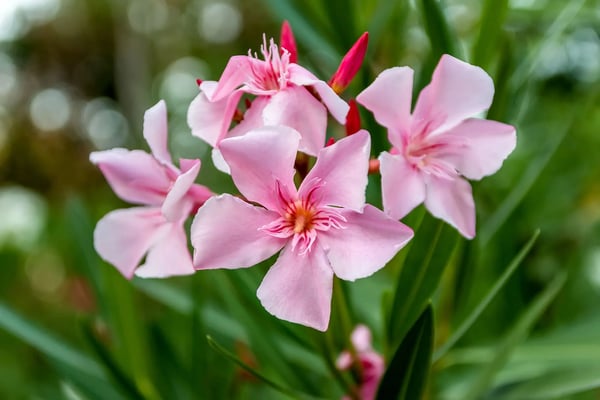
Scientific name: Nerium oleander
Oleander is a lovely garden shrub prized for its evergreen leaves and pale pink, purple, or white flowers, but it is one of the more toxic plants found in the garden
Possible symptoms: colic, diarrhea (possibly bloody), sweating, incoordination, shallow/difficult breathing, muscle tremors, recumbency; large ingestions can result in death from cardiac failure Source
47. Peach Tree
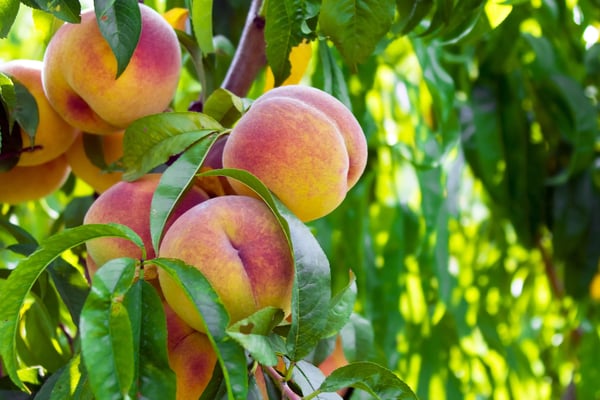
Scientific name(s): Prunus persica
Like apple, cherry, and apricot trees, leaves, stems, and pits of peach trees contain cyanide. They are even more toxic if the leaves are in the wilting stage.
Possible symptoms: Red mucous membranes, dilated pupils, difficulty breathing, panting, shock. Source
48. Plum Tree

Scientific name(s): Various Prunus species, such as Prunus domestica
Like apple, cherry, peach, and apricot trees, leaves, stems, and pits of all kinds of plum trees contain cyanide. and are most toxic when the leaves are in the wilting stage.
Possible symptoms: Red mucous membranes, dilated pupils, difficulty breathing, panting, shock. Source
49. Winterberry Holly
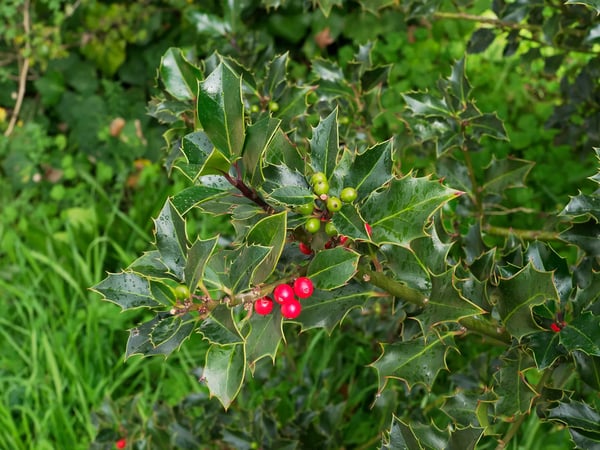
Scientific name(s): Holly genus
You may not have to worry about this evergreen hedge shrub unless you are in a warm enough climate for it to grow, which excludes most of Canada. However, many kinds of holly can be found indoors during the winter months as people decorate for Christmas.
Possible symptoms: Lip-smacking, drooling, head shaking, vomiting, diarrhea, loss of appetite Source
50. Yew
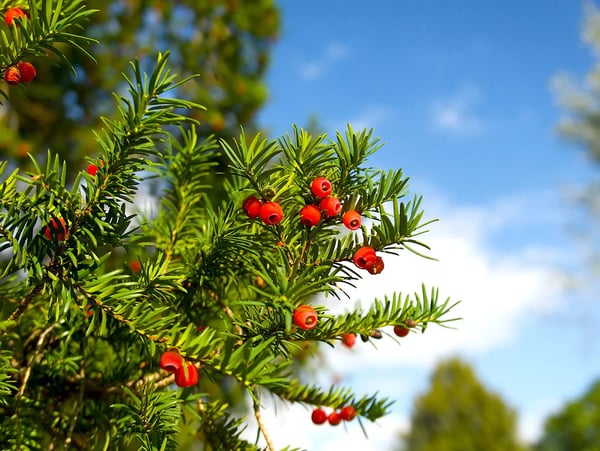
Scientific name(s): Taxus genus
A common evergreen with many variations, the yew tree or shrub is extremely toxic to dogs, humans, and many other animals. The genus name, Taxus, is even where we get the term "toxic" from. Avoid planting it in your garden.
Possible symptoms: Drooling, vomiting, weakness, difficulty breathing, life-threatening changes in blood pressure and heart rate, dilated pupils, tremors, seizures, coma, death Source.
5 Best Dog Friendly Plants
As you can tell from the extensive list above, dogs and gardens don't always mix, but that doesn't mean you can't bring your dream of a beautiful backyard landscape to life. By choosing the right types of plants, and taking the appropriate precautions to limit interaction, you can enjoy a garden and keep your curious dog safe.
Here are five of our favourite dog friendly plants for your garden:
Roses

This classic flower is not only gorgeous but makes a beautiful centrepiece for any garden. Rose petals are non-toxic and totally edible, so a curious dog who decides to munch on your roses won't be at risk of any toxicity or digestive issues.
Though the flower itself is safe, it is important to note that roses have thorns, so there is still a risk of injury if your dog decides to get up close and personal. It's best to keep roses blocked off with a fence so that your dog can't walk among the pointy bush.
Sunflower

This super-tall flower is another popular option in Canada. Not only do the flowers make for a unique and eye-catching garden, they are non-toxic and safe if your dog decides to take a taste. Just be cautious of the seeds. Whole, shelled sunflower seeds aren't easy to digest, so be cautious of your dog munching on the fallen seeds. Instead, if you harvest the seeds, you can shell, soak, and grind them to make a highly nutritious topper for your pooch.
Snapdragon
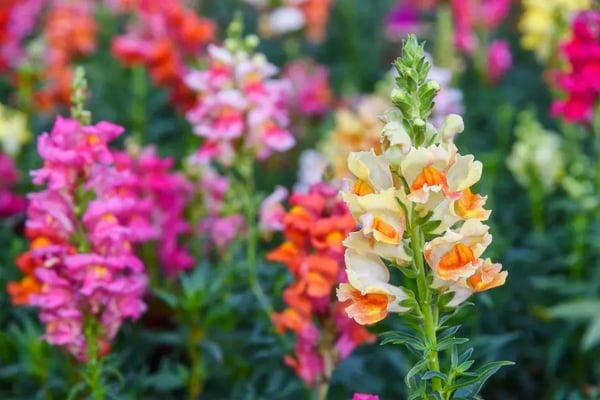
If you are looking to add a variety of colours to your spring garden, then try snapdragons. These hardy plants are non-toxic and safe for dogs. Snapdragons do attract bees, though, so if your dog doesn't play well with our friendly neighbourhood pollinators, then it's best to keep them out of reach.
Pansies

This vibrant and delicate flower makes an excellent addition to any floral garden and fortunately, it's non-toxic. It comes in a variety of colours to bring life to any garden. Another of the edible flowers, Pansies both look and taste good. Don't be surprised if your dog takes a shine to them, but don't worry if they decide to take a bite.
Echinacea

You might know of echinacea as a supplement you take to get rid of a cold, but the echinacea flower is actually a beautiful flower that is safe for dogs. In addition to being a looker the Echinacea plant, commonly called Purple Coneflower, contains compounds that help to boost the immune system. This doesn't mean you should encourage your dog to eat it, but if they do take a taste, it might even help them.
Frequently Asked Questions About Dog Friendly Plants
Are Herbs Safe for Dogs?
Many herbs, such as thyme and oregano, are generally considered safe for dogs in small amounts, such as in cooked dishes or as a seasoning. However, it's essential to ensure that your dog doesn't consume excessive amounts, as large quantities could potentially lead to digestive upset.
Are there other garden plants that are dangerous for dogs?
Yes, many garden plants can be dangerous or toxic to dogs if ingested. Some common examples include lilies, azaleas, oleander, and certain types of ferns. If you aren't sure if your garden is toxic to your pet, then it's a good idea to fence off your garden and supervise your dog when outside.
How do I keep my dog out of the garden?
Fences or other barriers can help to limit access to the potentially hazardous plants in your garden. More determined dogs, especially those that can easily hop fences, may need to be supervised or put on a tie-out to guarantee no access to the garden.
What should I do if my dog eats plants from my garden?
If you suspect your dog has ingested something toxic or harmful, monitor them for any unusual symptoms such as vomiting, diarrhea, lethargy, or difficulty breathing. Contact your veterinarian or an emergency pet helpline for immediate advice.
.png?width=200&height=66&name=logo%20(1).png)


.jpg)
